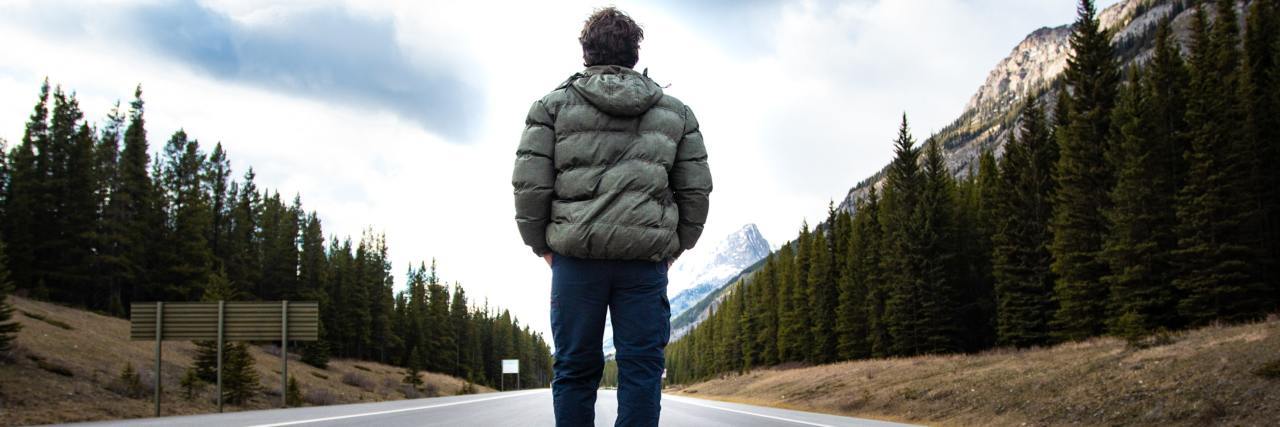How I Turned My Struggle With Muscular Dystrophy Into Advocacy
Editor's Note
Join The Mighty’s Spoonie Life Hacks group to get tips for tackling everyday tasks from people living with chronic illnesses — or to share your own hacks!
I was 17 years old when I received a diagnosis of facioscapulohumeral muscular dystrophy (FSHD). It was the end of one long journey and the beginning of another that continues today.
Before my diagnosis, I experienced strange physical symptoms I always blamed on being “unique.” For example, my eyes wouldn’t fully close when I slept. I had a difficult time drinking from a straw and pronouncing some vowels. I noticed my shoulder muscles were weakening as I played football in high school — so much so I thought I had injured myself. After visiting about a dozen doctors and undergoing a series of painful tests, I was told I had FSHD — a rare disease doctors said would “eat up” my body. My doctor predicted I would likely die in my sleep by age 30.
As you might imagine, I didn’t take the news of my diagnosis well. At the time, there was no internet and I had access to very little information about FSHD. Although the disease is typically inherited and is commonly seen in multiple members of the same family, my case occurred even though there was no history of FSHD in my family. I felt very isolated. I only knew the disease was a rare and progressive condition that initially causes weakness in the muscles of the face, shoulders, arms and trunk. As time passes, patients often experience weakness in their lower bodies as well, and many eventually depend on the use of wheelchairs for daily mobility. The lack of information available on FSHD caused me great distress. I stopped playing sports in my early 20s because I didn’t want to fall or get injured. I lived in fear of what physical abilities I might lose next.
It has been over 40 years since I was diagnosed, and my outlook has become much more positive. My disease has progressed, and I now depend on a wheelchair or power scooter for daily mobility. But I decided to use the challenges FSHD presented as opportunities to excel, and I am proud of the life I have built. I have a wife of 31 years, I raised a son and I recently retired from a successful career as a crime analyst. My next mission is to help others with FSHD by raising awareness of the disease and sharing my story so they know they are not alone.
I became aware of the FSHD Society many years ago. Its founder, Carol Perez, became my confidante and her legacy inspires the work that I do today. In recent years, the internet and social media have allowed me to become involved with multiple FSHD-related Facebook groups, participate in monthly video conferences and attend annual get-togethers with hundreds of people who have FSHD. I was once alone and afraid, but technology now allows me to reach out to other people who are like me.
I am looking forward to participating in a Patient-Focused Drug Development (PFDD) meeting on FSHD hosted by the Food and Drug Administration (FDA) and the FSHD Society this April. This meeting is meant to provide the FDA with an opportunity to hear directly from patients and caregivers about the impact FSHD has on their daily lives and the need for a treatment. According to the FDA, “This input can inform the FDA’s decisions and oversight both during drug development and during our review of a marketing application.” My hope is sharing my story will help encourage the funding of research that will one day lead to a cure for FSHD.
Although there are currently no approved treatments for FSHD, I am optimistic the progress being made in research will lead to one. We now know the disease is caused by the abnormal activity of the DUX4 gene and researchers are working on developing a treatment that addresses this. I am proud to know my efforts are contributing to this progress.
My hope is through my advocacy work, others will learn they do not have to fight FSHD alone. I also want others with FSHD to look at their own lives and see what they can do to raise awareness. Someone who is newly diagnosed with FSHD faces a long and bumpy road, but if we can tell them where some of the bumps are and how to get around them, we can make their journey a little bit easier. Alone we are rare, but together we are strong.
Unsplash image by Anna Claire Schellenberg

